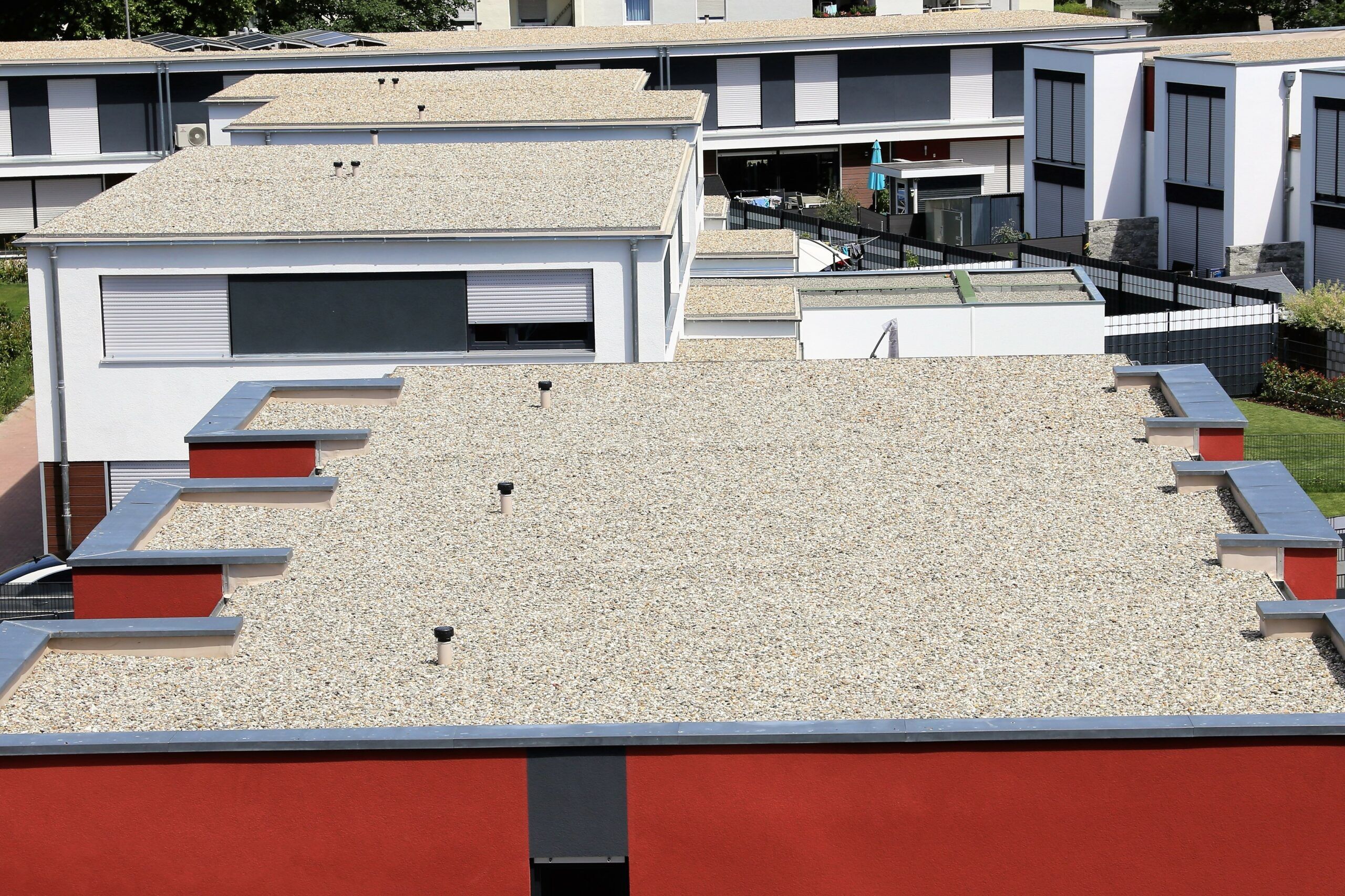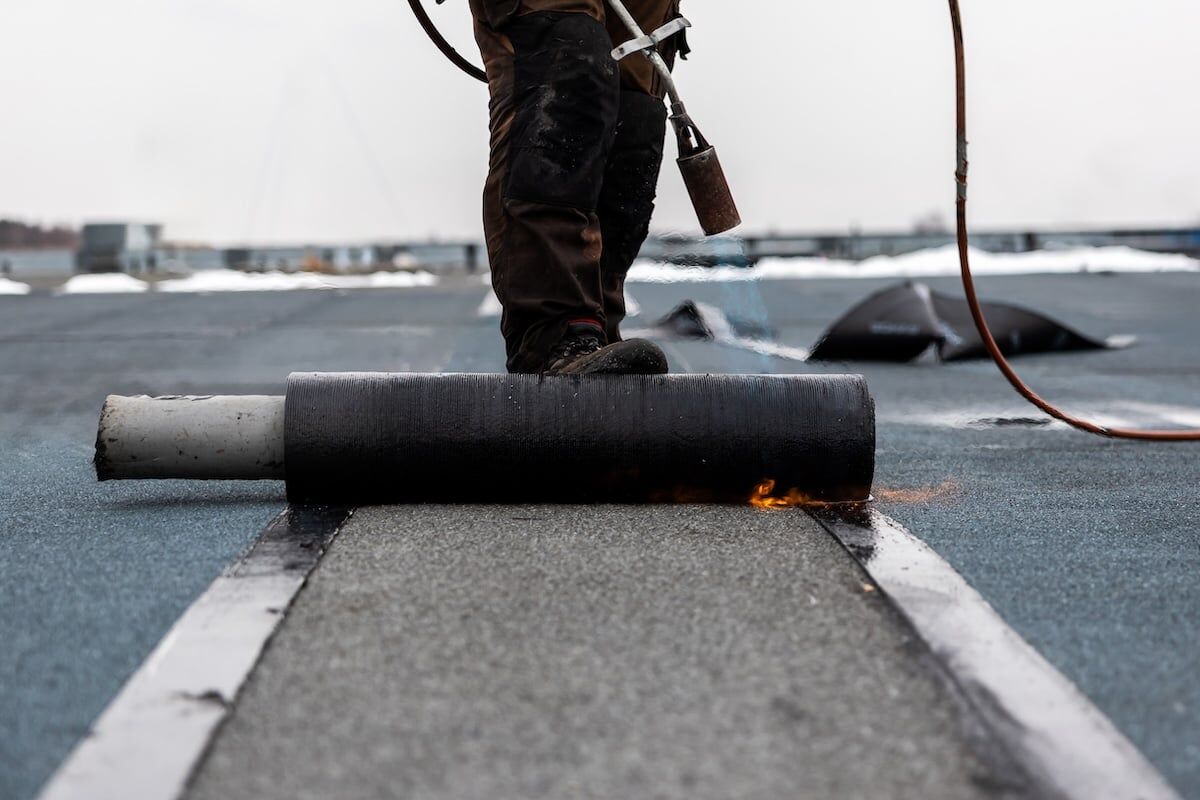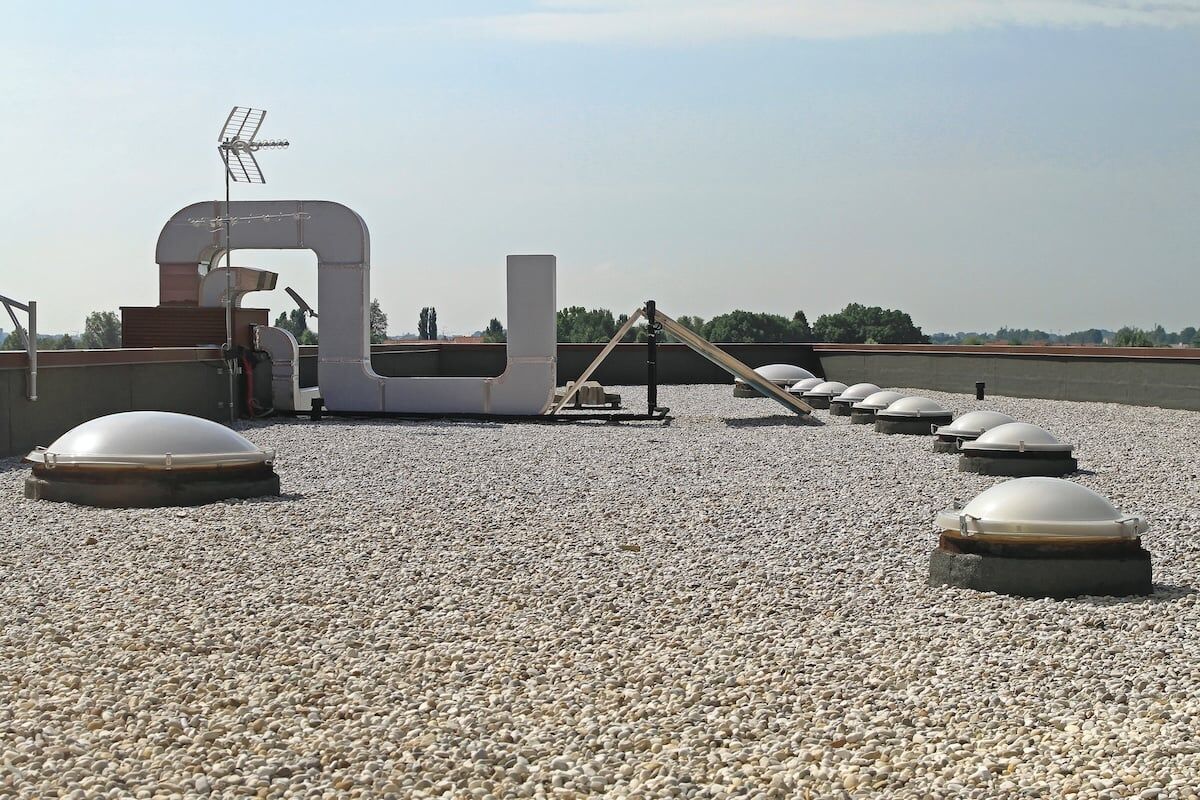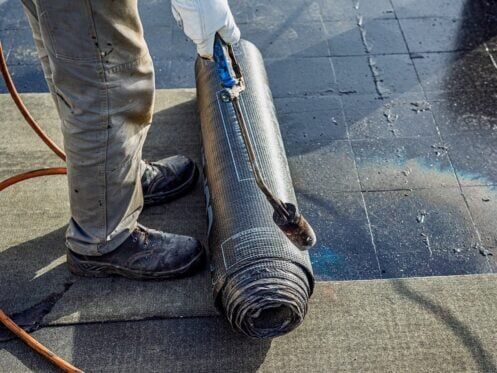A built up roof is one of the most time-tested commercial roofing systems available today. It is a reliable option for flat or low-slope roofs and has been a go-to solution for decades in both public and private sectors. If you own a commercial property or manage a facility, understanding how built up roofs work and what they offer can help you make the right decision for long-term performance.
In this article, we will explain:
- What makes up a built up roof system
- Why many property owners still choose it today
- How to maintain and extend its lifespan
Whether you’re replacing an aging roof or planning a new construction project, this guide will help you understand the true value of built up roofing.
🤔 A Look Inside: What Makes Up a Built Up Roof?
Layers of Protection
A built up roof system consists of multiple layers of roofing felt, asphalt, and surfacing material. These layers are installed in alternating fashion and fused together using hot bitumen or adhesive.
- Roofing felt: Provides structure and waterproofing
- Asphalt or bitumen: Binds the materials and offers flexibility
- Surfacing: Gravel, stone, or reflective coating to protect from UV rays
Material Options
While the traditional material is hot asphalt, today’s systems also allow the use of cold adhesives or modified bitumen.
- Cold adhesive: Safer to install and ideal for temperature-sensitive environments
- Modified bitumen: Offers enhanced flexibility and performance
- Reflective coatings: Improve energy efficiency and reduce cooling costs
Compatibility with Flat Roof Structures
Built up roofing is designed to work best on commercial properties with minimal slope. It is particularly suitable for:
- Warehouses
- Office complexes
- Multi-unit residential buildings

👍 How Built Up Roofs Perform Over Time
Durability in Harsh Conditions
Built up roofs are known for their ability to stand up to heavy foot traffic, temperature swings, and intense weather conditions.
- Multiple plies create redundancy in waterproofing
- Gravel surfacing protects against hail and debris
- Low susceptibility to punctures compared to single-ply systems
Fire and UV Resistance
Many built up systems are designed with Class A fire ratings, making them suitable for properties with strict safety regulations. The mineral or gravel top layer helps reflect UV rays and prevent degradation.
Average Lifespan
Most built up roofs last between 20 and 30 years, with some systems reaching 40 years or more when properly maintained.
Factors that influence lifespan:
- Quality of materials used
- Number of plies installed
- Frequency of inspections and repairs
📋 Built Up Roof vs Other Flat Roofing Systems

Comparing with TPO and EPDM
Built up roofing offers significant advantages compared to popular single-ply options.
- TPO is more reflective but less durable under heavy loads
- EPDM is flexible and cost-effective but more vulnerable to punctures
- Built up systems deliver layered protection and long-term stability
Cost Differences
Built up roofs generally have a higher installation cost due to labor and materials. However, the long-term performance and lower repair needs can offset the initial expense.
- Higher upfront cost
- Fewer frequent repairs
- Longer expected service life
Structural Requirements
Built up roofing is heavier than other systems. Ensure that the building’s support structure can accommodate the added weight.
- May require inspection of roof deck
- Reinforcement may be necessary on older buildings
✅ 6 Built Up Roof Advantages for Commercial Properties
- Excellent Waterproofing Capabilities: The layered design prevents water from penetrating through small cracks or punctures.
- Enhanced Longevity: When properly installed and maintained, a built up roof can outlast most alternatives.
- UV and Heat Resistance: Reflective surface options reduce internal temperatures and prolong membrane life.
- Strong Resistance to Foot Traffic: Ideal for buildings with rooftop equipment or maintenance pathways.
- Fire Safety Ratings: Provides peace of mind for commercial properties that need to meet fire code requirements.
- Minimal Ongoing Maintenance: Once installed, these roofs require less frequent upkeep compared to other flat systems.
🧰 Maintenance Strategies for Built Up Roof Systems
Routine Visual Inspections
Walk the roof at least twice a year and after major storms.
- Look for signs of blistering or splitting
- Monitor gravel coverage to ensure even protection
- Check for ponding water in low spots
Scheduled Preventive Services
Bring in a commercial roofing expert every 6 to 12 months to perform:
- Flashing reinforcement
- Minor patch repairs
- Surface recoating if needed
Common Warning Signs
Address these issues before they worsen:
- Soft spots underfoot
- Dark patches in interior ceilings
- Visible bubbles or cracks on the surface

🛠️ Installation Considerations and Challenges
Ideal Weather Conditions
Installation should be scheduled in dry weather for best results.
- Avoid rainy or snowy seasons
- Hot applications require temperature management
- Cold adhesive options can extend the installation season
Safety Protocols
Because hot asphalt may be used, proper safety measures are essential.
- Trained and licensed crews
- Ventilation and fire suppression protocols
- Use of protective equipment
Project Timeline
Built up roofing can take several days longer than single-ply systems to install.
- Larger buildings may take up to two weeks
- Additional time needed for cooling and surfacing layers
- Extended timelines mean careful scheduling is essential
💡 Energy Efficiency and Environmental Impact
Reflective Coatings and Cool Roofs
Using light-colored or reflective coatings can significantly reduce heat absorption, especially in urban environments.
- Reduces cooling costs in summer
- Minimizes strain on HVAC systems
- Qualifies for energy-efficiency incentives in some regions
Sustainable Disposal and Recycling
Although BUR systems are harder to recycle than some single-ply materials, certain components can still be reclaimed.
- Gravel and metal flashings may be reused
- Considerations for landfill impact during tear-off
- Choose eco-friendly adhesives and coatings when possible
⭐️ Built Up Roofing with Indy Roofing & Restoration
At Indy Roofing & Restoration, we know commercial roofing is a serious investment. That’s why we take a hands-on approach to every built up roof project, combining deep industry knowledge with premium materials and professional installation. We tailor our services to meet the needs of business owners, property managers, and developers who expect long-term performance and durability.
If you are planning a new roof or need an evaluation of your current system, our team is here to guide you every step of the way. Contact Indy Roofing & Restoration and let us help you protect your commercial property from the top down.

